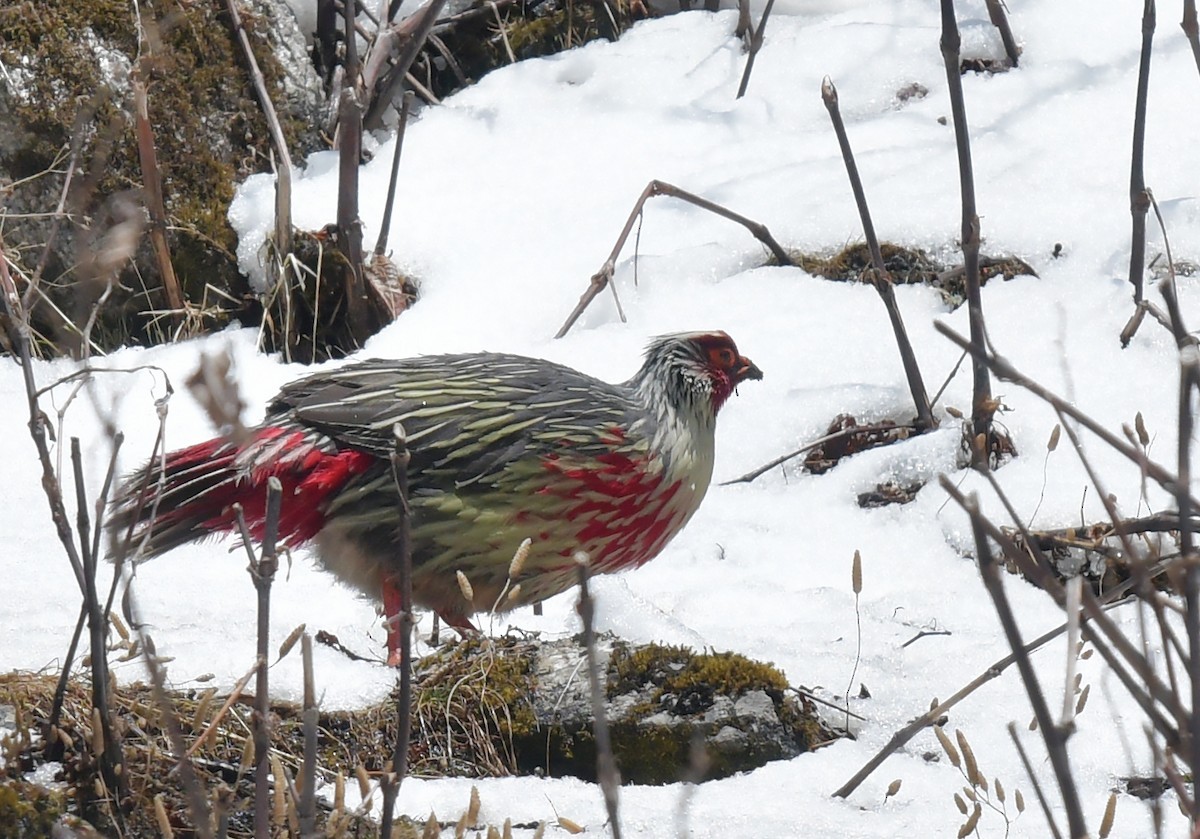Blood Pheasant
A species of Blood Pheasant Scientific name : Ithaginis cruentus Genus : Blood Pheasant
Blood Pheasant, A species of Blood Pheasant
Botanical name: Ithaginis cruentus
Genus: Blood Pheasant
Content
Description General Info
 Photo By Rofikul Islam
Photo By Rofikul Islam Description
The blood pheasant has the size of a small fowl, about 17 in (43 cm) in length with a short, convex, very strong black bill, feathered between bill and eye, and a small crest of variously coloured feathers. The colour of the plumage above is dark ash, with white shafts, the coverts of the wings various tinged with green, with broad strokes of white through the length of each feather, the feathers of the chin deep crimson; on the breast, belly, and sides, feathers are lance-shaped, of various length, the tips green with crimson margins, collectively resembling dashes of blood scattered on the breast and belly. The tail consists of 12 subequal feathers, shafts white, rounded, the ends whitish, the coverts a rich crimson red. Both males and females have red feet and a distinct ring of bare skin around the eye that typically is crimson colored, but is orange in a few subspecies. Females are more uniformly colored, being overall dull brown and often with some gray to the nape. Although some of the subspecies that have been described are highly distinctive, others are not, and some variation appears to be clinal. Consequently, the number of valid subspecies is disputed, with various authorities recognizing between 11 and 15. They mainly vary in the plumage of the males, especially the amount of red or black to the throat, forehead, neck, chest and tail, and the presence or absence of rufous in the wings. 
Size
48 cm
Nest Placement
Ground
Feeding Habits
Blood Pheasant consumes a varied diet, including moss, leaf litter, grass shoots, insects, small fruits, seeds, bamboo shoots, and fir and juniper shoots. Blood Pheasant forages by scratching the ground and feeding arboreally. Blood Pheasant forms groups to feed and shows sexual differences in feeding behavior during the incubation period.
Habitat
The habitat of blood Pheasant primarily consists of high-altitude rhododendron and subalpine scrubs, pine and juniper forests, as well as bamboo thickets. These birds prefer areas near water sources. Their habitats are influenced by slope, aspect, and seasonal climates and are distributed across broad geographical regions characterized by such mountainous and forested environments.
Dite type
Granivorous
General Info
Feeding Habits
Bird food type
Distribution Area
Blood pheasants live in the mountains of Nepal, Sikkim, northern Myanmar, Tibet, and central and south-central China, where they prefer coniferous or mixed forests and scrub areas near the snowline. They move their range depending on the seasons, and are found at higher elevations during the summer. With snow increasing in fall and winter, they move to lower elevations. 

 Photo By Rofikul Islam
Photo By Rofikul Islam